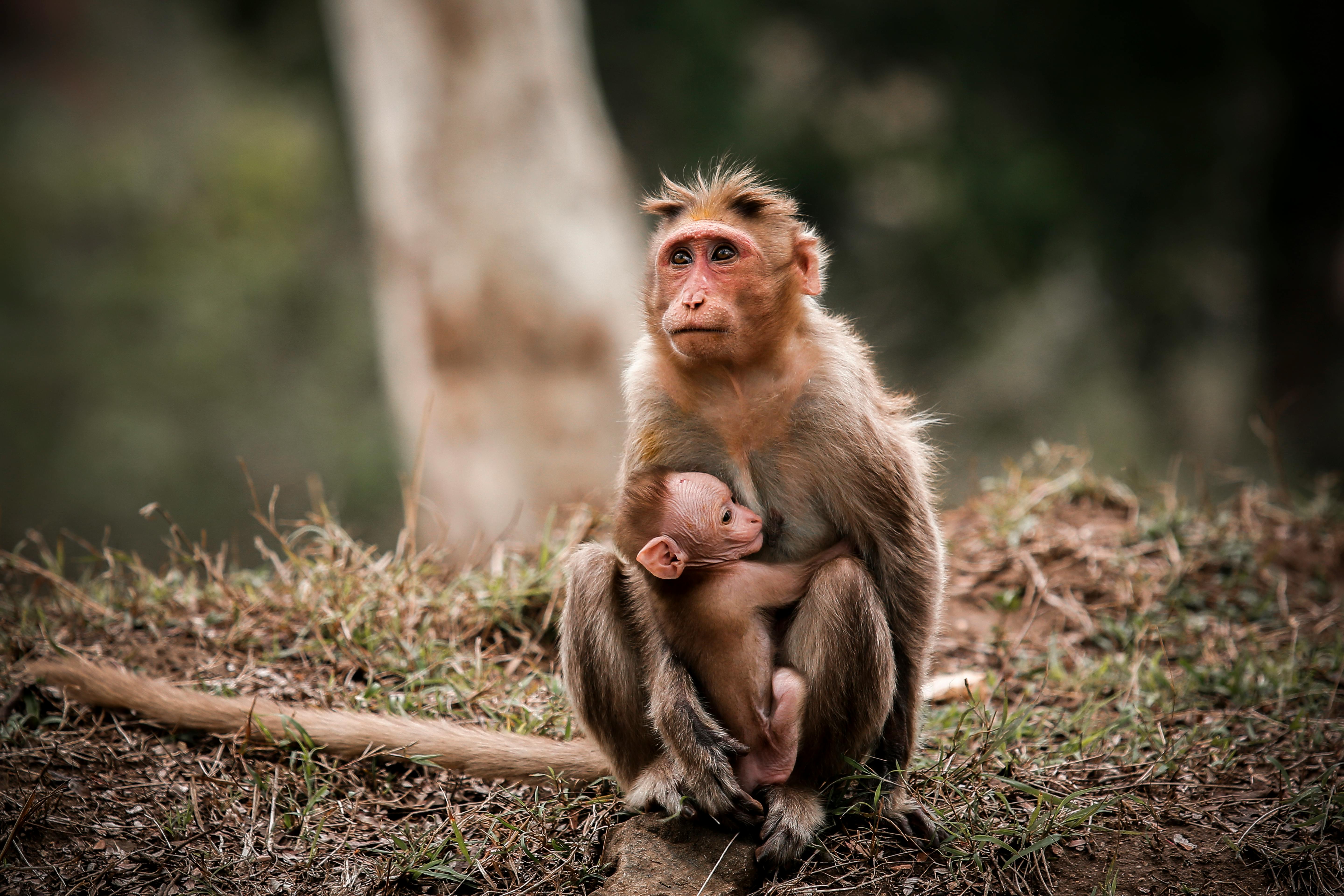Have you ever been in a situation where a baby stares at you and you can’t figure out why? It can be an unsettling experience if you don’t understand why a baby is staring. In fact, there are several possible explanations for why babies stare. Understanding these reasons can help to make the situation less awkward and more enjoyable.A baby may stare at you because they are fascinated by the sight of a new person. Babies, especially younger ones, are still developing their vision and recognizing new faces. They may also be trying to study your facial expressions and body language to understand how you are feeling and what kind of reaction to expect. Staring could also be a sign of curiosity or simply because they are attracted to the colors or patterns on your clothing.
Babies Stare at People for Multiple Reasons
Babies are naturally curious about the world around them, and that includes the people they see every day. As a result, it’s not uncommon to catch babies staring directly at you with their big eyes. While it might be a bit unnerving, there are actually several reasons why babies may be staring.
One of the most common reasons is that babies are still trying to figure out how the world works. They’re constantly processing new information, and they may find people particularly fascinating because of their unique facial expressions and behaviors. Babies also tend to stare when they hear a new sound or see something new, as they try to make sense of what’s happening around them.
Another reason why babies may stare is because they’re trying to establish an emotional connection with the person in front of them. Babies are hardwired to form strong bonds with their caregivers, so when they look into your eyes, they’re trying to get a sense of who you are and how you feel about them. This can be especially true when babies recognize someone who has been in their lives for some time, such as family members or close friends.
Finally, some babies may simply stare out of boredom or lack of stimulation. If your baby has been sitting in one spot for a while without much activity going on around them, staring might be their way of passing the time. To keep your baby engaged and entertained, try introducing new toys or activities that will encourage them to explore and learn more about the world around them.
In short, there are several reasons why babies may stare at people—from exploring new sights and sounds to forming emotional connections with those around them. So next time your little one starts looking into your eyes for an extended period of time, take it as a sign that they’re just curious about what’s going on!
The Benefits of Baby-Staring
Baby-staring is an activity that has become increasingly popular in recent years, and it is one that can be very beneficial for both the baby and the parent. Baby-staring is the practice of looking deeply into a baby’s eyes, providing them with visual stimulation. It creates a moment of connection between parent and child, allowing for an understanding of each other and a sense of comfort.
Studies have shown that when infants are exposed to prolonged eye contact, their brains are stimulated by the release of hormones such as oxytocin. This hormone helps to create a bond between the baby and the adult, helping to build trust and comfort between them. Additionally, it has been found that babies who are exposed to eye contact on a regular basis develop better social skills later in life.
When looking into a baby’s eyes, parents can also learn about their emotional state by reading their facial expressions. This helps the parent understand how their child is feeling at any given moment, whether they are content or upset. It also provides insight into what they may need in order to feel comfortable or safe.
Baby-staring also provides entertainment for both parent and child. For babies, it is an engaging activity that can provide much needed stimulation as well as encourage bonding with their parents. For adults, it offers an opportunity to bond with their child and gain insight into how they think and feel about different stimuli they encounter throughout the day.
In conclusion, baby-staring can be a great way for both parents and babies to benefit from this practice in many ways. By providing visual stimulation, creating an emotional connection between them, teaching parents how to read facial expressions and providing entertainment for both parties; it is an activity that offers many benefits for all involved!
How to Respond to a Baby’s Gaze
Responding to a baby’s gaze is an important part of bonding with your little one. Eye contact is a powerful tool for connecting with your baby and conveying love and trust. As your baby grows, eye contact will help them learn language, recognize facial expressions, and begin to understand the world around them. Here are some tips for responding to a baby’s gaze:
Smile: A smile is the easiest and most natural way to respond to a baby’s gaze. Smiling at your baby can help build trust and start the conversation between you and your child.
Make Eye Contact: Making eye contact with your baby can help them learn about facial expressions, emotions, and language. The more you look into their eyes when talking or playing with them, the better they will be able to understand what you are saying or doing.
Talk & Sing: Talking or singing to your baby will help them understand language and start putting words together. It also helps create an emotional bond between you two. Use simple words that rhyme so that they can remember them better.
Play Games: Playing games such as peek-a-boo can help engage your baby in conversation. They will start recognizing certain words or sounds associated with the game, as well as learning facial expressions like smiling or laughing.
Responding to a baby’s gaze can be an enjoyable experience for both of you. By following these tips, you can create an emotional connection that will last a lifetime!
What Does it Mean When a Baby Stares for a Long Time?
When a baby stares for an extended period of time, it can be an indication of several different things. It could signal that the baby is trying to learn something new, or that they are curious about their surroundings. It could also mean that the baby is bored or simply looking around. Babies often stare at objects to try and figure out what they are and how they work. They may also stare when they hear something new or exciting, or when they are feeling overwhelmed by their environment.
Babies may also stare if they are feeling stressed or anxious, as this can be a sign of discomfort. If your baby stares for an extended period of time, try to identify any potential causes and address them accordingly. For example, if your baby is staring because they are feeling overwhelmed by too much stimulation, take a break from activities and give them some time to relax. If your baby is staring out of curiosity, use this opportunity to explain what’s happening in their environment and engage them in conversation.
It’s important to remember that all babies will stare from time-to-time — it’s one way for them to explore the world around them and gain more understanding about their environment. If you notice your baby staring for an extended period of time, take some time to observe what might be causing it and adjust your approach accordingly.

Signs That Your Baby is Looking for Attention
It is normal for babies to need attention and seek out interaction with their caregivers. As a parent or guardian, it’s important to be aware of the signs that your baby is looking for attention so that you can provide it in a timely manner. Here are some of the common signs that your baby may be looking for attention:
Crying: One of the most obvious signs that your baby is seeking attention is crying. Babies cry when they are hungry, tired, or uncomfortable. But they also sometimes cry simply because they want to be held or interacted with. If you notice your baby crying and nothing else seems to be wrong, try holding them and talking softly to them.
Smiling: Babies will often smile at their parents when they want attention. This could mean they are happy to see you or are trying to get your attention in order to initiate playtime or conversation. Pay close attention when your baby smiles – it could be a sign that they want some quality time with you!
Reaching Out: When babies are very young, one way they communicate their desire for interaction is by reaching out their hands towards an adult. This could mean that they want to be held or touched, or simply that they would like some quality time with their caregiver.
Making Sounds: Another sign of a baby seeking attention is making sounds such as cooing and babbling. When babies make noises, it usually indicates that the would like someone to talk back and interact with them. Pay close attention when your baby starts making noises – it could be a sign that they need some quality time!
Stimulating Your Baby’s Curiosity Through Staring
Stimulating your baby’s curiosity through staring is a great way to help them learn and explore the world around them. Staring is an important part of any baby’s development, as it helps to strengthen their vision and build their cognitive abilities. Here are some tips on how to use staring to stimulate your baby’s curiosity:
Encourage Eye Contact
Encouraging eye contact with your baby is one of the best ways to stimulate their curiosity. Make sure to look into their eyes as you talk, smile, or move around the room. This will help them learn how to focus and interact with you and the environment around them.
Make Interesting Faces
Making interesting faces can also help stimulate your baby’s curiosity. Try making silly faces or funny expressions while talking or playing with them. This will help them learn how to interpret facial expressions and will provide a form of entertainment for them when they’re bored.
Play Peek-a-Boo Games
Playing peek-a-boo games is also a great way to stimulate your baby’s curiosity through staring. Cover your face with a blanket or scarf and then reveal it again suddenly, saying “peek-a-boo!” Your little one will be delighted every time they discover you again, and this game can be modified in many ways as they grow older.
Include Visual Stimulation
Introducing visual stimulation into your interactions with your baby is another great way to encourage curiosity through staring. Use brightly colored objects like toys or pictures that are interesting for babies to look at and explore. This will help engage their minds as well as spark their imagination.
Talk To Them
Finally, talking to your little one while they stare at you can be incredibly stimulating for them mentally and emotionally. Use simple language that is easy for babies to understand, such as short sentences or simple commands like “look here” or “touch this”. This will help keep their attention focused on what you are saying, while also helping them develop language skills at an early age.
Is It OK to Let Babies Stare at You?
It is perfectly normal for babies to stare at people they do not know. This is because babies are still learning to recognize the world around them, and staring is one way they do this. Staring also helps them practice their focus and concentration skills. As long as the baby is not uncomfortable or distressed, it is generally okay to let them stare at you.
Babies can be quite curious, so it’s natural for them to want to take a good look at people they come in contact with. They may even fixate on something about you that fascinates them, such as your eyes or hair. This can be endearing and comforting for the baby, so it’s usually okay to let them stare if they seem content.
In addition to recognizing faces, babies can also use their gaze to communicate their needs. If a baby stares intently and then begins fussing or crying, it may mean that they need something like a diaper change or a nap. If the baby continues staring without fussing or crying, it could be because they are content and interested in what’s going on around them.
In any case, you should never force the baby out of staring if it seems like it’s making them happy or comfortable. Allowing them time to take in their environment will help foster healthy development and build trust between you and the baby.
It is important to pay attention to how the baby responds when you interact with them while they are staring at you. If the baby seems anxious or overwhelmed by your presence, then pulling away from them might be necessary until they feel more comfortable again. Remember that every child develops differently and has their own set of needs when it comes to interacting with strangers.

Conclusion
Babies stare at us for a variety of reasons. It could be because they are curious and want to learn more about us, or it could be because they are trying to communicate with us. Babies may also stare in order to bond with us and show their affection. Whatever the reason, it’s important to remember that babies don’t understand what their staring may mean to grown-ups.
It’s best to not take it too personally when a baby stares at you and instead use this opportunity to engage in a conversation with them. Talking, singing, and playing with your baby can be a great way to strengthen your bond and foster healthy development for your little one.
In conclusion, when a baby stares at you, it can be a sign of curiosity or an attempt at communication. As adults, we should take this time as an opportunity to engage in meaningful interactions with our babies. This will help create strong emotional bonds and provide them with essential developmental benefits that will last throughout their lives.




